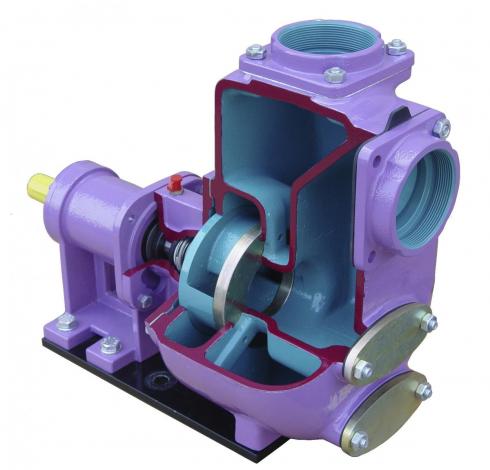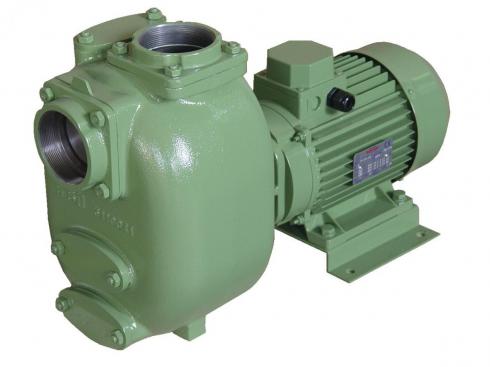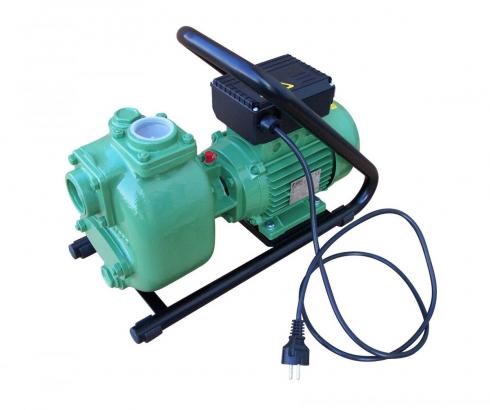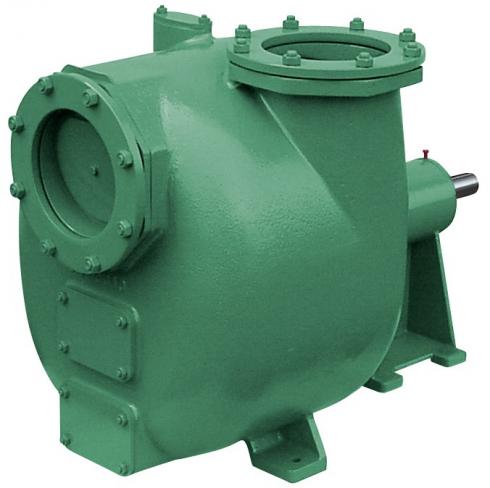Self-Priming Pumps of S Series
-
For sewage drainage waters
- Dry-installation
Drainage vortex centrifugal pumps of S Series are designed for handling polluted water, discharge, and drying during construction and emergency works.
Vortex pumps of S series are self-priming and handle liquids with solid particles, as well as with air locks present in the flow of the liquid.
TECHNICAL SPECIFICATION
|
Inlet-outlet pipes’ dimension |
DN 40 ...DN 300 (1 ½” …12”) |
|
Flow |
max 1,440 m3/h |
|
Head |
max 60 m.w.c. |
|
Liquid suction depth |
7.5 meters |
|
Maximum diameter of solids |
76 mm |
The Concept of Vortex Pumps’ Operation
During the rotation of the impeller, the kinetic energy of the motor is transmitted to the liquid through the creation of turbulence excitations in the pump working chamber that has been preliminarily filled with medium.
The entrained air is discharged from the working chamber, hence, the vacuum is created, while the air and liquid from the pipeline are sucked in the working chamber of the pump. The check valve at the pump inlet does not let the penetration of air back to the pipeline and ensures the presence of liquid in the pump working chamber. Thus, the pump construction ensures the self-priming capability making it possible for the pump, with a preliminary filled chamber, to lift the liquid from the depth of max 7.5 meters independently, without the need for collection valves.
Benefits of Drainage Vortex Pumps
- Simple construction, as the impeller is the only moving component.
- Availability of special orifices for the inspection of the working chamber, removal of sediments, and filling of liquid.
- Self-priming capability. The pump is automatically filled during its operation, at the liquid column height of max 7.5 meters.
- Resistance to solid inclusions and abrasive particles.
- Simple installation procedure, there is no need for an intake valve. Besides, the pump can be installed in a place that is convenient for maintenance.
- The possibility to handle chemically aggressive liquids.
- External lubrication of mechanical seals.
- Long service lifetime, as well as trouble-free replacement of assemblies that are worked-out.
Horizontal vortex centrifugal pumps of S series with semi-open impeller are designed for handling liquids with the maximum viscosity of 50 cSt, however, with the high content of solids with the diameter up to 76 mm.
The pumps of this series can also transfer ample soft inclusions such as pieces of petroleum pitch, paraffin, various pieces of fabrics, and fibers.
In the case of clogging, you can always easily clean the pump thanks to simple and convenient access to the operating chamber.
A wide selection of mechanical seals makes it possible to use these pumps for handling aggressive and abrasive media.
Vortex pumps of S series can be produced of cast iron or stainless steel.
Pumped Media
- Dirty water;
- Wastewater;
- Washed-out sediments of oil products’ tanks and vessels;
- Paper masses;
- Kerosene.
Fields of Application
- Construction: pumping of contaminated water from pits and channels, as well as extraction of groundwaters, drying of basins needed for construction, the supply of water from wells and channels.
- Agriculture: irrigation.
- Household facilities: pumping of rainfall drains, emergency discharge of water, drying.
- Petrochemical production and transportation: pumping of sedimentations of oil products’ tanks, as well as handling of slurry deposits.
- Special application: waterflood relief measures and operation under emergency conditions.
- Mining: drainage of groundwaters.








 Services:
Services: